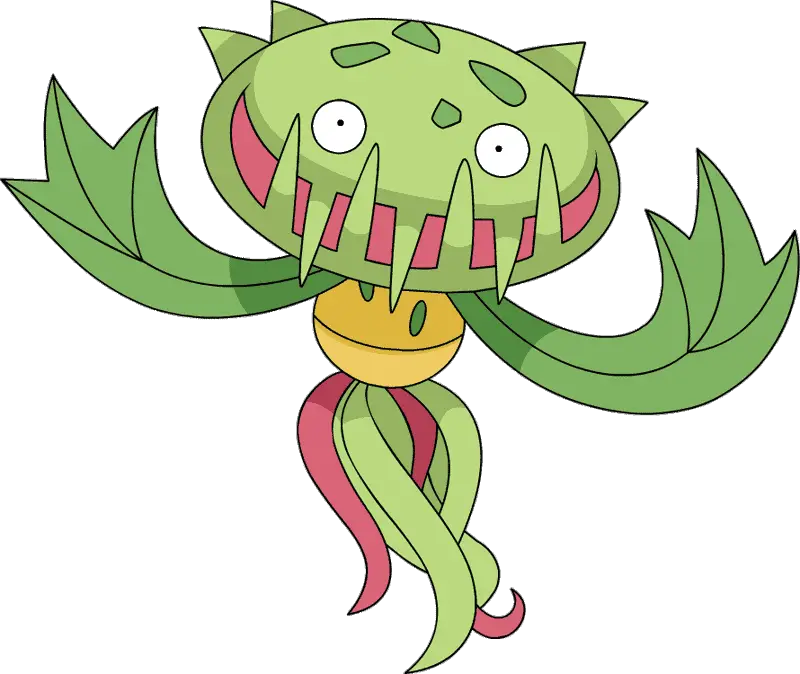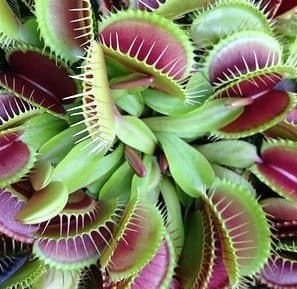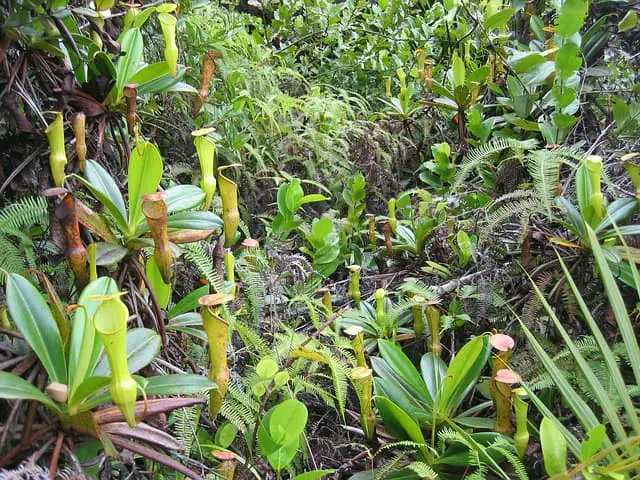As a fellow pokemon fan, I get really excited when I see (or hopefully catch!) a pokemon that resembles my favorite animal or plant. If you like carnivorous plants and pokemon, I have good news: you can catch carnivorous plant pokemon! But can you catch a Venus flytrap pokemon? Yes. Venus flytraps are fascinating plants, and it comes to no surprise that the pokemon franchise took them as inspiration for one pokemon: Carnivine. And it is not the only one! Many other pokemon resemble some exotic carnivorous plants.
Carnivine

Carnivine is a grass-type pokemon. It was introduced to the public in 2006, with generation IV. This pokemon is one of a kind. It has unique looks from its terrifying jaw to its tentacle-like arms. If you would like to catch Carnivine in a pokemon game, make sure to look for it during sunny and bright weather. Then, you will have the highest spawning rate. Also, if you are playing Pokemon Go, take into consideration that Carnivine is a regional exclusive pokemon. It can only be found in specific locations: Florida, North Carolina, South Carolina, and Georgia [1].
Similarities: Carnivine vs Venus flytraps
Carnivine has many characteristics and qualities that resemble Venus flytraps:
- The traps: Carnivine has a jaw like trap. The trap is used to catch bug type pokemon and to attack adversaries. Carnivine has sweet saliva inside its trap that attacks prey. Such a mechanism is the same Venus flytraps employ. Venus flytraps produce sweet nectar to lure their prey.
- Diet: Carnivine is a bug catcher pokemon. Similarly to venus flytraps, it lures bugs prey into its trap and then captures them. In the pokemon series, they show Carnivine consuming a wide variety of bug type pokemon, including Ledyba
 . In real life, venus flytraps also have a diverse diet. They consume crickets, beetles, grasshoppers, spiders, slugs, flies, ants, and worms.
. In real life, venus flytraps also have a diverse diet. They consume crickets, beetles, grasshoppers, spiders, slugs, flies, ants, and worms.  Color: The color of Carnivine is spot on (just like this picture on the right). Carnivine has green leaves, and the inside of its traps is reddish. Venus flytraps are naturally of those exact colors. However, growers have developed other colors of Venus flytraps over the years. Now, you can buy red and yellow Venus flytraps.
Color: The color of Carnivine is spot on (just like this picture on the right). Carnivine has green leaves, and the inside of its traps is reddish. Venus flytraps are naturally of those exact colors. However, growers have developed other colors of Venus flytraps over the years. Now, you can buy red and yellow Venus flytraps.- Location: In Pokemon Go, Carnivine is a region exclusive pokemon. It can only be found in a few southern States of the United States: Florida, North Carolina, South Carolina, and Georgia [1]. Even though the States are not entirely accurate, they are very close. You can grow Venus flytraps almost anywhere in the world (if you have the right set up). However, Venus flytraps are only native to South Carolina and North Carolina in the United States.
Differences: Carnivine vs Venus flytraps
Now, let’s explore a few key differences between Carnivine and Venus flytraps
- Time to digest: Once Carnivine has caught a victim, it continues to digest it. Carnivine takes a whole day to digest its prey. However, Venus flytraps take a lot longer! A Venus flytrap takes several days, and sometimes up to two weeks to consume a meal.
- The tentacles: Carnivine has a unique characteristic. It uses its tentacle arms to clamp itself to trees and wait for its prey. In reality, Venus flytraps do not have tentacles or any other type of leaf. All the leaves in a Venus flytrap are part of a trap. The is no other structure growing out of Venus flytraps, except for flowers. Venus flytraps grow flowers; however, those only grow during a few months in the spring. If you would like to learn about Venus flytrap flowers
 , we have a full article
, we have a full article for you.
for you. - The trap aperture: Yes, Carnivine’s trap is very similar to Venus flytraps, but there is a crucial difference. Carnivine opens its mouth at a 180-degree angle. Venus flytraps, also keep their traps open, but at a much lower angle (less than 90-degrees).
- Size: The size and weight of pokemon vary greatly. Carnivine specifically has a human-like size, which differs significantly from venus flytraps. Venus flytraps are small plants that grow in the forest floors of North and South Carolina. Carnivine represents a fictitiously giant type of Venus flytrap. The idea to make Carnivine so large might have come from the ongoing joke of making carnitine bite James’ head. If you are not familiar with the reference, the video below shows what I am talking about.
https://www.youtube.com/watch?v=iKtty7BgCng&ab_channel=NenitaAndrea
Beyond the Venus flytrap Pokemon
Other Pokemon, aside from Carnivine, are inspired by Carnivorous Plants. Bellsprout is one of the most well-known examples. It might not be as apparent with Bellsprout, but as it evolves to Weepinbell, and finally to Victreebell, it becomes more apparent. Pitcher plants inspire all of them. Pitcher plants are another type of carnivorous plant. Its pitcher-like shape characterizes them. The picture below shows several of them growing in the wild.

Bulbapedia describes this pokemon evolution family in detail. The excerpt below explains the prey luring and catching mechanism from Victreebel. And many of the details relate closely to Pitcher plants. Pitcher plants use sweet nectar to attract insects. Once a bug has fallen inside one of its pitcher-structures. The plant will start decomposing the victim very slowly.
“Covering Victreebel’s mouth is a leaf with a long, brown, yellow-tipped vine growing out of it. The vine is flicked to mimic an animal in order to attract prey. Victreebel also produces a sweet scent to further aid in luring its victims. Acid that has dissolved numerous prey animals becomes sweeter and even more effective at attracting prey.” Bulbapedia
We hope you enjoyed this comparison article between Venus flytraps and Carnivine. Best of luck catching Carnivine!
